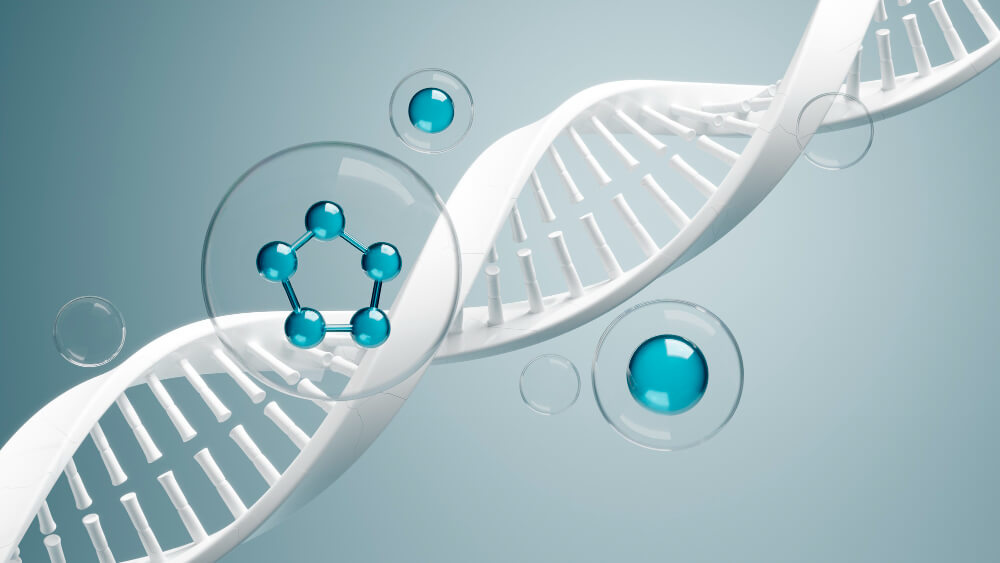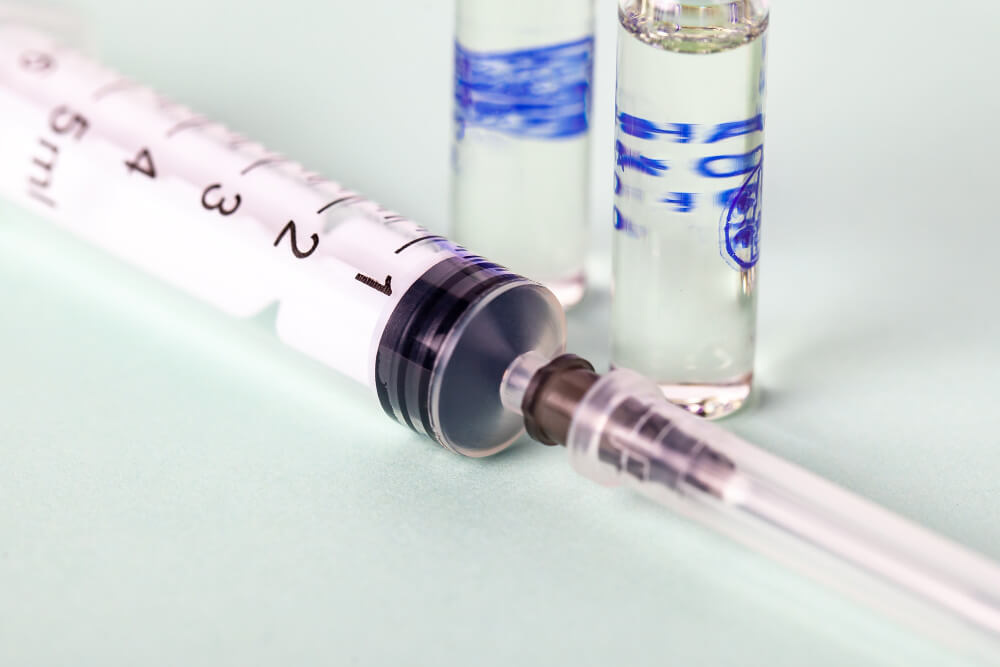Beyond the Lifespan: A Guide to Longevity Medicine
What if aging wasn’t something that simply happened to us, but something we could actively influence? Imagine a future where your later years are just as vibrant, active, and fulfilling as your middle ones. This isn’t a fantasy from a science fiction novel; it’s the central promise of a revolutionary and rapidly advancing field of healthcare. This approach seeks to extend our healthspan, the period of our lives spent in good health, free from chronic disease and disability.
This new paradigm is built on a proactive and personalized strategy that goes far beyond the traditional model of treating sickness as it arises. Instead of waiting for symptoms to appear, it uses advanced diagnostics and a deep understanding of human biology to identify and address the root causes of aging at a cellular level. The goal is to optimize health, enhance performance, and build resilience against age-related decline long before it begins. This is the core of longevity medicine, a discipline dedicated not just to adding years to your life, but life to your years.
By focusing on prevention, personalization, and participation, this medical field empowers individuals to take control of their biological destiny. It integrates cutting-edge science with foundational health principles, creating a comprehensive roadmap for aging gracefully and powerfully. It’s about understanding your unique genetic makeup, your lifestyle, and your environment to build a strategy that preserves your vitality for decades to come.

What Is the Core Philosophy of Longevity Medicine?
The fundamental philosophy of longevity medicine represents a significant shift in how we think about health. Traditional medicine has historically operated on a reactive basis. You feel sick, you see a doctor, and you receive a diagnosis and treatment for a specific ailment. While this model is essential for acute illnesses and injuries, it often falls short when addressing the slow, progressive decline associated with chronic, age-related diseases.
Longevity medicine flips this script entirely. Its philosophy is proactive, predictive, and preventative. It asks not ‘How do we treat this disease?’ but rather ‘How do we prevent this disease from ever developing?’. It views the body as an intricate system where aging itself is the primary risk factor for major conditions like heart disease, cancer, neurodegenerative disorders, and type 2 diabetes. By targeting the biological mechanisms of aging, we can potentially delay, mitigate, or even prevent these conditions altogether.
This approach is deeply rooted in the concept of healthspan over lifespan. While lifespan is simply the total number of years you live, healthspan is the number of years you live in good health. We all know people who have lived a long life but spent the last decade or more suffering from debilitating illnesses. The goal of longevity medicine is to make your healthspan equal your lifespan, ensuring that your final years are characterized by independence, cognitive clarity, and physical capability.
It’s a deeply personalized journey. There is no one-size-fits-all prescription for a long and healthy life. This field recognizes that each person is a unique biological entity, with a specific genetic code, lifestyle, and environmental exposure. Therefore, interventions are tailored to the individual, creating a bespoke plan for optimal aging.

What Are the Key Pillars of a Longevity Strategy?
A robust longevity strategy is not built on a single ‘magic pill’ but on a holistic framework that addresses all aspects of human health. These foundational pillars work synergistically to slow the aging process and build a resilient biological system. They are the practical application of the field’s proactive philosophy, turning scientific knowledge into daily habits.
This comprehensive approach acknowledges that our daily choices have a profound impact on our cellular health and long-term vitality. By optimizing these key areas, we can create an internal environment that promotes repair, reduces inflammation, and resists the damage that accumulates over time. This is a clear example of how the future of medicine from treatment to prevention is taking shape, empowering patients to become active participants in their own wellness journey.

How Does Nutrition Impact Our Healthspan?
Nutrition is arguably the most powerful lever we can pull to influence our health and longevity. The old adage ‘you are what you eat’ is profoundly true at a molecular level. The food we consume provides the building blocks for every cell in our body and directly influences gene expression, inflammation, and metabolic health. A longevity-focused diet typically emphasizes whole, unprocessed foods rich in phytonutrients, fiber, and healthy fats.
Key strategies often include caloric optimization, ensuring the body gets the nutrients it needs without an excess of energy that can accelerate aging pathways. Some approaches also incorporate periods of fasting, like intermittent fasting or periodic prolonged fasts. These practices have been shown to activate cellular cleanup processes, known as autophagy, which remove damaged components and promote cellular rejuvenation. The focus is less on a specific named diet and more on a personalized nutritional pattern that supports stable blood sugar, a healthy gut microbiome, and low levels of chronic inflammation.

Why Is Exercise a Non-Negotiable for Aging Well?
If there were a single intervention that could be bottled and sold as a longevity drug, it would be exercise. Its benefits are vast and systemic, impacting everything from muscle integrity to brain function. Regular physical activity is crucial for maintaining muscle mass, which naturally declines with age in a process called sarcopenia. Strong muscles are not just for movement; they are a metabolic organ that helps regulate blood sugar and reduce inflammation.
An ideal longevity exercise plan includes a mix of modalities. Cardiovascular exercise, like brisk walking, running, or cycling, strengthens the heart and improves mitochondrial function, the powerhouses of our cells. Strength or resistance training is essential for building and preserving muscle and bone density. Finally, stability and mobility work, such as yoga or stretching, helps maintain balance and flexibility, reducing the risk of falls and injury, which can be devastating in later life.

Can Sleep Really Extend Our Lives?
Sleep is not a passive state of rest; it is an active and critical period of repair and consolidation for the brain and body. During deep sleep, the body ramps up tissue repair, produces essential hormones, and clears metabolic waste from the brain. Chronic sleep deprivation is a major driver of aging, linked to increased risk of obesity, diabetes, cardiovascular disease, and Alzheimer’s disease.
Prioritizing seven to nine hours of high-quality sleep per night is a cornerstone of any longevity plan. This means creating a consistent sleep schedule, even on weekends, and optimizing your sleep environment. A cool, dark, and quiet room is ideal. It also involves practicing good sleep hygiene, such as avoiding caffeine late in the day and limiting exposure to blue light from screens before bed, which can suppress the production of the sleep hormone melatonin.

How Does Stress Management Affect Biological Age?
While acute stress is a normal part of life, chronic stress is a silent accelerator of the aging process. Persistent psychological stress leads to elevated levels of the hormone cortisol. Over time, high cortisol can disrupt sleep, promote fat storage, increase blood pressure, and drive chronic inflammation throughout the body. This systemic inflammation is a key mechanism behind many age-related diseases.
Effective stress management is therefore a critical longevity pillar. This doesn’t mean eliminating all stress, which is impossible, but rather building resilience and having tools to manage it. Practices like meditation, deep breathing exercises, spending time in nature, and maintaining strong social connections have all been scientifically shown to lower cortisol levels and reduce the physiological impact of stress. By managing our mental and emotional state, we directly protect our physical health.

What Advanced Tools Do Longevity Specialists Use?
Longevity medicine distinguishes itself through the use of advanced diagnostics that provide a high-resolution snapshot of an individual’s current biological state. These tools go far beyond the standard blood panel you might get at an annual physical. They are designed to uncover risks and imbalances long before they manifest as symptoms, allowing for truly proactive interventions.
This data-driven approach is what makes the personalization of care possible. By measuring a wide array of biomarkers, clinicians can move beyond generic advice and create a health strategy that is precisely tailored to an individual’s unique biology. This level of detail is fundamental to the practice, as is the process of designing personalized patient wellness plans that translate complex data into actionable lifestyle changes and targeted therapies.

How Is Data Used to Create a Health Blueprint?
The process begins with deep, comprehensive testing. This often includes advanced blood biomarker analysis that looks at hundreds of markers related to inflammation, metabolic health, nutrient status, and hormone levels. It provides a detailed picture of what’s happening inside the body right now. This is often combined with genomic testing, which analyzes your DNA to identify genetic predispositions to certain conditions or how you might respond to specific nutrients and medications.
Wearable technology, such as smart rings and continuous glucose monitors, provides another layer of real-time data on sleep quality, activity levels, heart rate variability, and blood sugar responses. When all this information is aggregated, it forms a detailed health blueprint. This blueprint allows a practitioner to pinpoint specific areas for improvement, track progress over time, and adjust the strategy as the body responds to interventions.

What Are Biological Clocks and Can We Reverse Them?
One of the most exciting frontiers in longevity science is the concept of biological age versus chronological age. Your chronological age is simply how many years you have been alive. Your biological age, however, is a measure of how old your cells and tissues are on a functional level. You might be 45 chronologically but have the biological age of a 35-year-old, or vice versa.
Scientists can now measure biological age using sophisticated tests called epigenetic clocks. These tests analyze methylation patterns on your DNA, which are chemical tags that change over time and are influenced by lifestyle and environment. The exciting implication is that biological age is not fixed. Studies have shown that intensive lifestyle interventions focused on diet, exercise, sleep, and stress management can potentially slow down or even reverse an individual’s biological age. This provides a tangible metric for measuring the success of a longevity protocol.

What Role Do Hormones Play in Aging?
Hormones are chemical messengers that regulate countless physiological processes, and their decline is a hallmark of the aging process. From around the age of 30, key hormones like DHEA, testosterone, estrogen, and growth hormone begin to decrease. This decline contributes to many of the classic signs of aging: loss of muscle mass, increased body fat, reduced energy, cognitive fog, and decreased libido.
Longevity medicine places a strong emphasis on hormonal balance. The goal is not to create unnaturally high levels of hormones but to restore them to the optimal range of a healthy young adult. This is done carefully, based on comprehensive testing and symptom evaluation. For instance, understanding the nuances of growth hormone optimization evidence and clinical application is crucial for practitioners aiming to safely and effectively address age-related decline. When done correctly, hormone optimization can have a profound impact on quality of life and healthspan.

How Does Longevity Medicine Align with Preventive Care?
At its heart, longevity medicine is the ultimate form of preventive care. While conventional preventive medicine focuses on screenings like mammograms and colonoscopies to catch disease early, longevity medicine aims to prevent the cellular conditions that allow disease to develop in the first place. It represents an evolution of the same core principle: it is better to prevent a problem than to treat it.
This forward-thinking approach is in perfect alignment with the goals of major public health organizations worldwide. These bodies recognize that the growing burden of chronic, noncommunicable diseases is the greatest health challenge of our time. Longevity medicine offers a powerful toolkit to address this challenge at the individual level, creating a ripple effect that could transform public health outcomes. It empowers people with the knowledge and tools to actively manage their wellness, which is a key objective for health initiatives everywhere.
Government health resources often provide tools and information to help people get started on a path to better health. For example, you can use online tools to find recommended screenings and get personalized health advice from resources like MyHealthfinder. This aligns with the longevity principle of taking an active role in your own health journey.
The global health community is increasingly focused on this proactive stance. The World Health Organization emphasizes the importance of preventing and managing chronic conditions through lifestyle modification and early intervention, which are central tenets of longevity medicine. The rise of these diseases poses a significant threat to healthcare systems and quality of life globally.
Understanding what constitutes standard preventive care is a great first step. This includes a range of services from vaccinations to screenings for blood pressure, cholesterol, and various types of cancer. Authoritative sources like MedlinePlus offer detailed information on these essential services. Longevity medicine builds upon this foundation, adding a deeper layer of personalized diagnostics and interventions.
Many of these foundational preventive services are now widely covered by health insurance, recognizing their value in long-term health and cost-effectiveness. Learning about what your plan covers can be an important part of managing your health, and websites like WebMD provide helpful guides on navigating preventive care coverage. The principles of longevity medicine can be seen as the next logical step in this evolution of healthcare, moving from early detection to true prevention.

How Can You Start Your Own Longevity Journey?
Embarking on a longevity journey can feel overwhelming, but it begins with simple, foundational steps. You don’t need to have access to every advanced test or therapy to start making a positive impact on your healthspan today. The most powerful interventions are often the lifestyle changes that are accessible to everyone.
Start with the pillars. Take an honest look at your nutrition, exercise habits, sleep quality, and stress levels. Choose one area to focus on first. Perhaps it’s committing to a 30-minute walk every day or eliminating sugary drinks from your diet. Small, consistent changes are far more sustainable and effective than drastic, short-lived overhauls. Celebrate small wins and gradually incorporate more positive habits into your routine.
Educate yourself, but be discerning. The longevity space is filled with information, not all of it credible. Seek out reputable sources and be skeptical of claims that sound too good to be true. Focus on understanding the fundamental principles of cellular health rather than chasing every new trend or supplement. The goal is to build a sustainable lifestyle, not to follow a fleeting fad.
As you progress, you may want to seek out a healthcare professional who is trained in functional or longevity medicine. These practitioners can guide you through the more advanced aspects of a longevity protocol, such as comprehensive testing and personalized interventions. They can help you interpret complex data and create a strategy that is safe, effective, and tailored to your unique biology. Finding the right partner for your health journey is a crucial step in optimizing your long-term wellness.
Ultimately, longevity is about empowerment. It’s the recognition that you are not merely a passive passenger on your journey through life. You have the ability to influence your biology, to build resilience, and to chart a course toward a longer, healthier, and more vibrant future. It begins with the decision to prioritize your healthspan and the commitment to take the first step.
Frequently Asked Questions

Are there established clinical biomarkers to measure a patient’s senescent cell burden?
Currently, there is no single, FDA-approved biomarker for quantifying a patient’s senescent cell burden in a routine clinical setting. The primary challenge lies in the heterogeneity of senescent cells, which can express different markers depending on their tissue of origin and the stressor that induced senescence. Researchers often rely on a combination of markers, such as senescence-associated β-galactosidase (SA-β-gal) activity and p16INK4a expression, which are typically measured in tissue biopsies.
While direct measurement remains largely confined to research, clinicians can monitor for downstream effects and components of the senescence-associated secretory phenotype (SASP). This can involve tracking systemic inflammatory cytokines like IL-6 and TNF-α, though these are not specific to senescence. The future of diagnostics in this field is likely to involve composite panels of blood-based biomarkers or advanced imaging techniques, but these are still in the developmental pipeline.

What is the distinction between senolytics and senomorphics, and what is their clinical status?
Senolytics and senomorphics represent two distinct therapeutic strategies for targeting cellular senescence. Senolytics are agents designed to selectively induce apoptosis in senescent cells, effectively eliminating them from tissues. In contrast, senomorphics do not kill the cells but instead modulate their behavior, primarily by suppressing the pro-inflammatory senescence-associated secretory phenotype (SASP).
Both classes of drugs are in various stages of investigation, with senolytics being further along in human clinical trials. For example, the combination of Dasatinib and Quercetin has been studied for conditions like idiopathic pulmonary fibrosis and chronic kidney disease with promising, albeit early, results. However, no senolytic or senomorphic drug is currently approved for general clinical use, as research continues to evaluate their long-term efficacy and safety profiles.

Beyond its role in aging, does cellular senescence have any beneficial physiological functions?
Yes, cellular senescence is a fundamental biological process with several critical, beneficial roles that are context-dependent. Its most well-known positive function is as a potent tumor suppression mechanism, where it acts as a stable cell cycle arrest to prevent cells with oncogenic mutations from proliferating. Senescence is also essential during embryogenesis, contributing to tissue remodeling and the formation of key structures.
Furthermore, transient senescence plays a vital role in acute wound healing and tissue repair. Following an injury, temporary induction of senescence in certain cells helps orchestrate the repair process by recruiting immune cells to clear debris and secreting factors that promote regeneration. This duality highlights why therapeutic approaches must be nuanced, aiming to clear chronic, pathological senescence associated with disease while preserving its beneficial, transient functions.
Are you a healthcare professional ready to lead the charge in this medical revolution? The future of patient care is proactive, personalized, and preventative. Talking Longevity offers the most comprehensive functional medicine training, longevity training, and biohacking certification programs available. Our courses are designed specifically for healthcare professionals, medics, and clinic owners who want to master regenerative medicine protocols and anti-aging therapies. Elevate your practice and empower your patients to live longer, healthier lives. Discover your path to expertise with Talking Longevity today.







